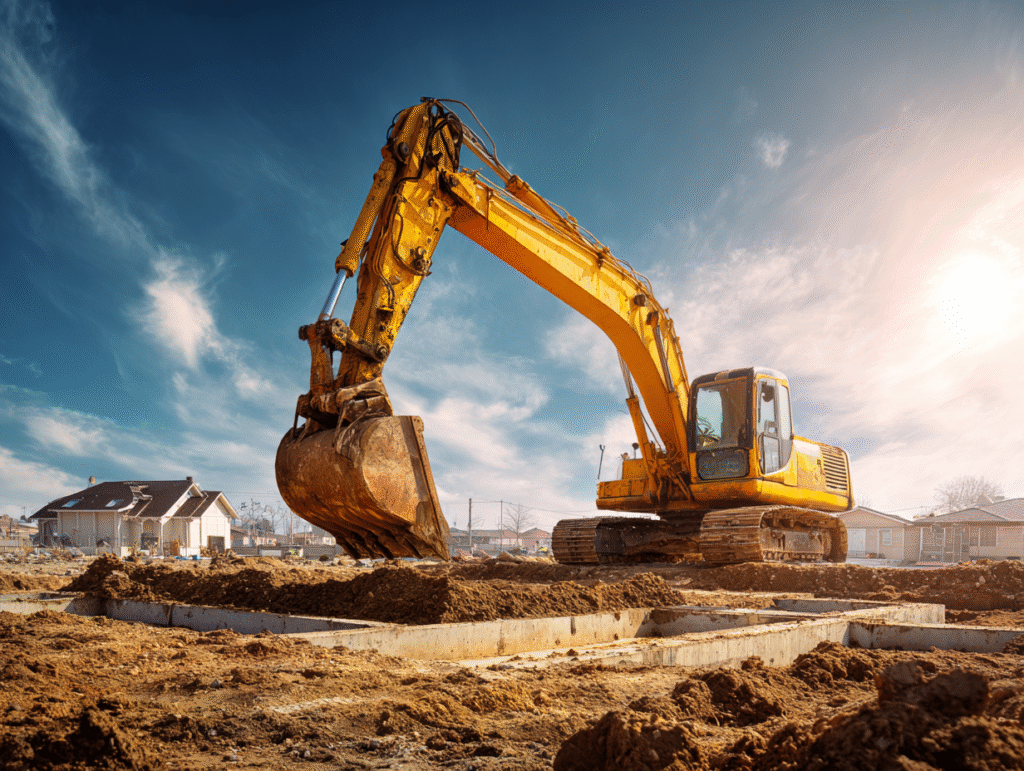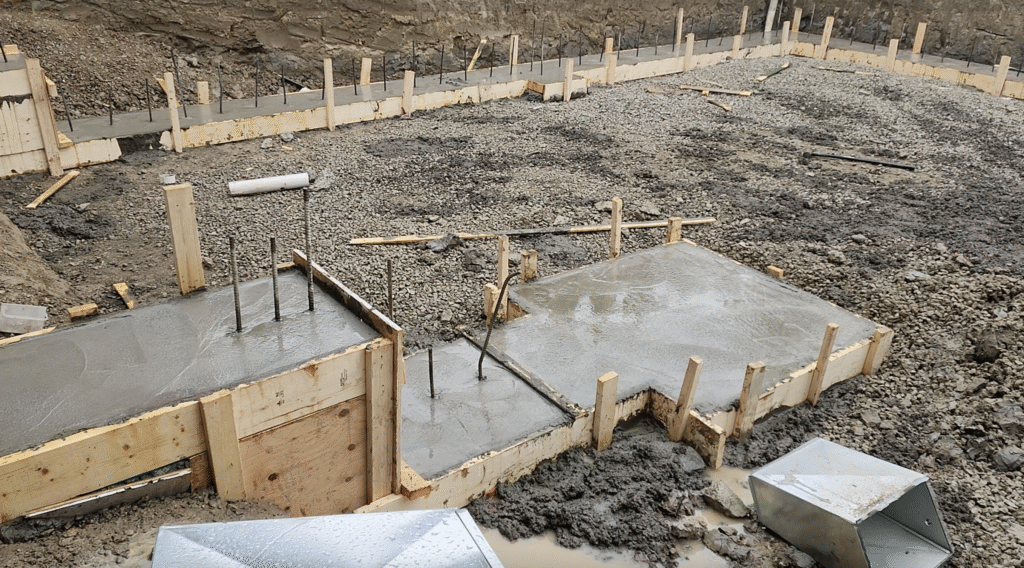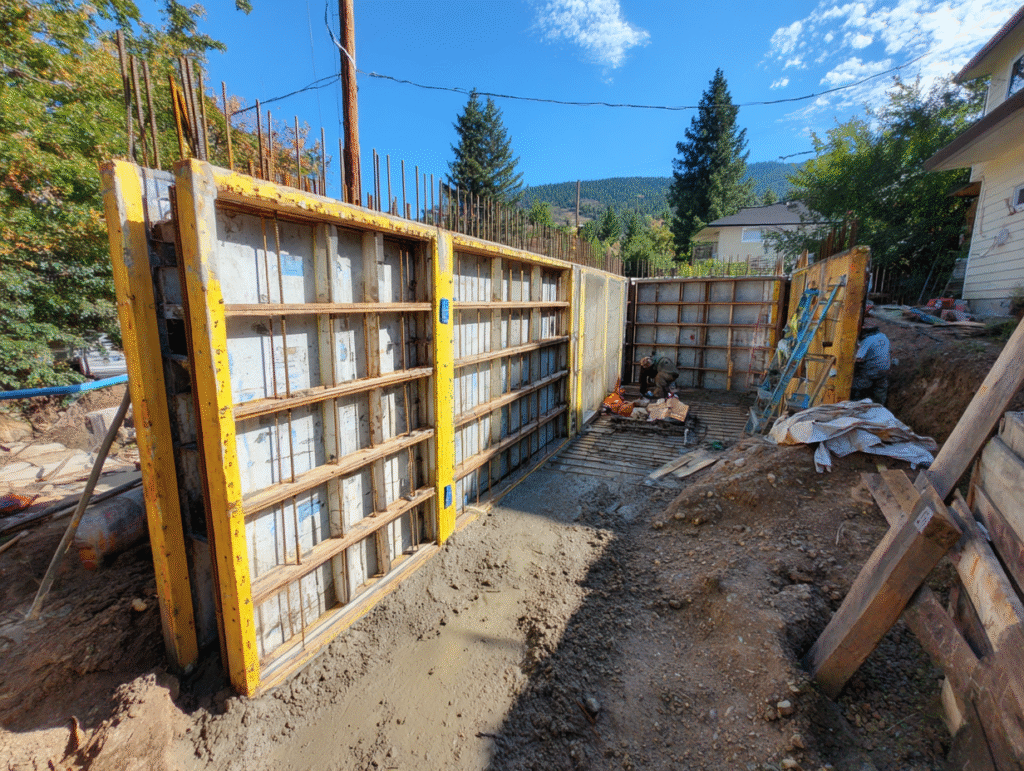Every great home starts with a strong foundation. Before you see walls, windows, or a roof, there’s an entire process happening below ground that determines the strength and longevity of your house. In this post, we’ll walk through the 5 key stages of building a home foundation, from the first dig to the final backfill.
Stage 1: Excavation
The process begins with excavation. Heavy machinery digs out the site to the required depth, based on building plans and local frost lines. Precision is critical here — the excavation must match the layout exactly, and the soil must be stable. Any soft spots are removed and replaced with compacted fill to prevent future settling.

Stage 2: Footings
Footings are the thick concrete bases that spread the weight of the home evenly into the ground. Wooden or metal forms are placed in the trenches, rebar is laid for reinforcement, and then concrete is poured and leveled. Footings need to be perfectly level and aligned to support the foundation walls above.

Stage 3: Foundation Walls
Once the footings cure, forms are built for the foundation walls. Rebar is added both vertically and horizontally, then concrete is poured to create solid, load-bearing walls. This step defines the basement or crawl space and must be done in one continuous pour to avoid weak points.

Stage 4: Waterproofing & Drainage
After the forms are removed, the walls are waterproofed with a liquid membrane, sheet membrane, or drainage board. Weeping tile or perforated drain pipes are installed at the base to redirect groundwater away from the foundation. This step protects the basement from moisture for decades to come.

Stage 5: Backfill
The final step is backfilling — replacing soil around the foundation. This is done carefully to avoid damaging the waterproofing. Soil is compacted in layers and graded to slope away from the house, ensuring proper drainage.

Conclusion:
A well-built foundation is more than just concrete in the ground — it’s a series of carefully planned steps that determine the stability of your entire home. By understanding these 5 stages, you can better appreciate the craftsmanship and engineering that happens before the first floor is even framed.
